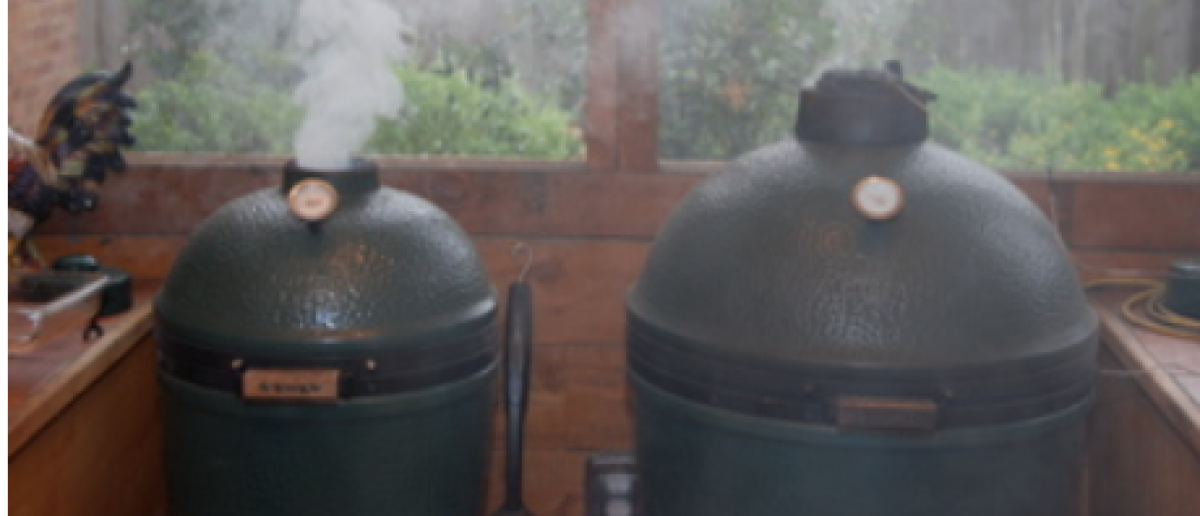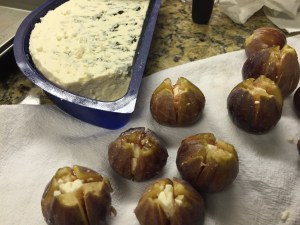
With my first trial I used boneless, skinless chicken breasts, but they were on the dry side, so at Jana’s suggestion, I turned to boneless, skinless thighs – much better! I bought a multipack at Sam’s Club, which has 3 thighs per pack, so I could use what I needed and freeze the rest.

Cut the jalapeños in half and remove the seeds and veins. Mix together sharp cheddar and a white cheese together, then fill each jalapeño half with the cheese mixture.
Place a gallon freezer bag over the each thigh and pound it to about 1/4-3/8 inch thickness (one can use a mallet or a heavy, thick glass). Trim the edges to get them even and season both sides with a rub.

Place a small amount of the cheese mixture along the edge of a thigh, carefully flip the cheese-filled jalapeño half over the row of cheese, then roll it up in the chicken filet. Now wrap two pieces of bacon around the roll and secure with toothpicks.

Cover the bacon with more of the seasoning. These rolls can be cooked immediately, or covered and kept in a refrigerator until ready to cook – even overnight.

Prepare the BGE for an elevated, direct 375* cook (by being higher above the coals, the flare-up from the dripping bacon is minimized). Optionally, an indirect cook would work, maybe at a slightly higher price.

Place the bombs in BGE, cook for 30 minutes, then turn and re-slather with BBQ sauce. Cook for about 15 min more or until chicken is 170-180*.
Take off, remove tooth picks, slice into rounds and enjoy!!!!

Enjoy,
Misippi Egger
(Clark Ethridge)
**********
Makes 6 bombs / 24 slices
Ingredients:
6 boneless, skinless chicken thighs
3 jalapeno peppers, halved and de-seeded
1 cup of cheese (1/2 c each of shredded cheddar &/or Monterey Jack)
12 slices of bacon
12 toothpicks (soak in water for 15 min to reduce burning)
Favorite chicken rub or seasoning
Favorite BBQ sauce
Instructions:
Prep:
(1) Cover a chicken thigh with a freezer-style ziplock bag, then pound to about 1/4-3/8 inch thick. Trim up evenly and season both sides with salt, pepper and/or bbq rub. Repeat with the rest of the thighs.
(2) Cut the jalapeños in half lengthwise and remove the seeds and ribs.
(3) Mix cheeses…fill each half jalapeño with a heaping mound of cheese mixture and put a small amount of the mixture on the edge of the thigh.
(4) Carefully place the stuffed jalapeño half on the edge of the breast, upside down onto the row of cheese, and wrap it into a roll.
(6) Wrap 2 slices of bacon around the roll and secure with 2 toothpicks (soak the tooth picks in water for 15 min to prevent them from burning)…slather the breast with BBQ sauce.
Grill:
(1) Prepare the BGE for an elevated, direct at 350-375* dome temperature (or can cook indirect at about 400*).
(2) Place bombs in BGE…cook for 30 minutes…then turn and re-slather with BBQ sauce…cook for about 15 min more or until chicken is 170-180*…take off, remove tooth picks, slice into rounds (about 4 rounds per roll) and enjoy!!!!






















































